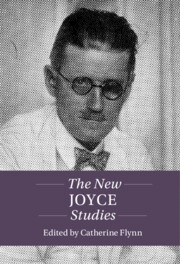Book contents
- The New Joyce Studies
- Twenty-First-Century Critical Revisions
- The New Joyce Studies
- Copyright page
- Contents
- Figures
- Notes on Contributors
- Acknowledgments
- Abbreviations
- Introduction
- Part I Scope
- Chapter 1 The Transcripts of (Post)Colonial Modernity in Ulysses and Accra
- Chapter 2 Joyce and Race in the Twenty-First Century
- Chapter 3 Dubliners and French Naturalism
- Chapter 4 Joyce and Latin American Literature Minor Transnationalism and Modernist Form
- Chapter 5 The Multiplications of Translation
- Chapter 6 The Joycean Public Domain and the Shape of Freedom
- Chapter 7 Ulysses in the World
- Part II Fragment and Frame
- Part III Perspective
- Bibliography
- Index
Chapter 7 - Ulysses in the World
from Part I - Scope
Published online by Cambridge University Press: 01 September 2022
- The New Joyce Studies
- Twenty-First-Century Critical Revisions
- The New Joyce Studies
- Copyright page
- Contents
- Figures
- Notes on Contributors
- Acknowledgments
- Abbreviations
- Introduction
- Part I Scope
- Chapter 1 The Transcripts of (Post)Colonial Modernity in Ulysses and Accra
- Chapter 2 Joyce and Race in the Twenty-First Century
- Chapter 3 Dubliners and French Naturalism
- Chapter 4 Joyce and Latin American Literature Minor Transnationalism and Modernist Form
- Chapter 5 The Multiplications of Translation
- Chapter 6 The Joycean Public Domain and the Shape of Freedom
- Chapter 7 Ulysses in the World
- Part II Fragment and Frame
- Part III Perspective
- Bibliography
- Index
Summary
Sean Lathan’s chapter addresses the recent explosion of article submissions to the James Joyce Quarterly from areas outside Europe and North America, especially Asia, and consider the questions of academic methodology and critical apparatus that this new situation raises. Ulysses, as we know, has been translated into dozens of languages and is read across the world.Approximately half of the submissions that arrive at the JJQ each year come from outside the United States, and over a third are from non-Anglophone countries.In a marked break from even ten years ago, the journal now regularly receives submissions from Iran, China, Sweden, and Japan. What does it mean to think about Joyce in this genuinely global context?This question is itself connected to a larger set of debates now playing out in modernist studies more generally about the intersections between the local and the regional, the national and the global, the marginal and the cosmopolitan, the intra-imperial and the transnational. This chapter explores what it means to see Ulysses from these different critical vantage points and how that, in turn, shapes our perception of the book as a work of art, a piece of globally circulated cultural capital, and an icon that looms over contemporary literary history.The aim of this chapteris not to claim Joyce’s masterwork for any particular critical school, but instead to explore how Ulysses changes when seen from these different perspectives.The chapter concludes by speculating about what this might portend for a new understanding of Joyce, as well as for a modernism no longer organized around national or linguistic coordinates.
- Type
- Chapter
- Information
- The New Joyce Studies , pp. 110 - 120Publisher: Cambridge University PressPrint publication year: 2022

